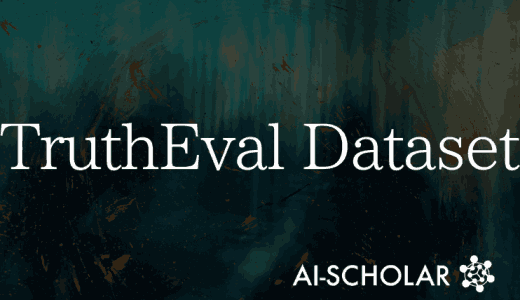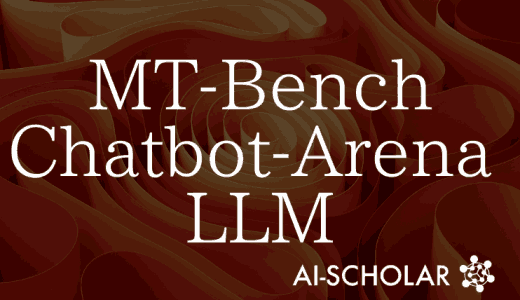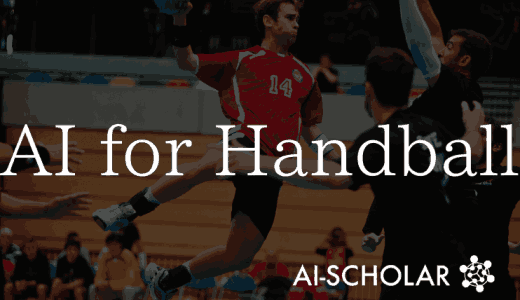
The Future Of Music Education, Flute X GPT And LAUI's Potential To Change Large-Scale Language Models
3 main points
✔️ Utilize LLM agents to not only follow user instructions, but also actively gather needs
✔️Demonstrate the utility ofLLM agents ina use case that requires real-time interaction, music learning
✔️Operate acomplexsystem ofsoftware and hardware toand provide optimal interaction for the user
Human-Centered LLM-Agent User Interface: A Position Paper
written by Daniel Chin, Yuxuan Wang, Gus Xia
(Submitted on 19 May 2024)
Comments: Published on arxiv.
Subjects: Human-Computer Interaction (cs.HC); Artificial Intelligence (cs.AI)
code:
The images used in this article are from the paper, the introductory slides, or were created based on them.
Summary
Large-scale language models allow users to use various systems in natural language. A typical utilization is, as is well known, in the form of chat (see figure below). Many services are working to improve usability by implementing additional large-scale language models in this way.

However, there is still room for improvement in user interaction utilizing such large-scale language models. At present, user interaction involves answering questions asked by the user, but there is little active interaction from the large-scale language model to ask questions of the user or confirm intentions. In other words, the large-scale language model only answers what is asked. This problem is especially apparent when utilizing large-scale language models for new complex systems.
This paper proposes a new framework that makes more effective use of large-scale language models' agent-based user interface (LLM-Agent User Interface, LAUI). In this framework, the large-scale language model does not function passively according to the user as in the past, but more actively as it works with the user to find new ways to use it.
LAUI is familiar with the use of the system, understands the needs of the user, and can think independently to suggest the best way for the user to use the system. It can proactively engage the user, such as what feedback to give to the user and what input to ask the user for. With this framework, users can simply communicate their needs in natural language and be able to use the application efficiently.
This paper presents an application called "Flute X GPT" as a concrete example of this LAUI. This is a music education application that utilizes an "LLM-in-the-loop" consisting of a large-scale language model agent, prompt manager, software system, and hardware. The application provides tactile guidance with servo motors, visual music symbol feedback, audio feedback, and natural language chat functionality, all of which are controlled by a large-scale language model agent.
The paper states that this is the first LAUI of this complexity and real-time nature.
Flute X GPT Overview
This paperpresents the Flute X GPT, a music education application,as a concrete example of auser interface (LAUI) that leverages the agents of alarge-scale languagemodel totest the utility of a large-scale language model.The Flute X GPT is used in a workshop-style use case whereuserspractice the flute.This use case provides a variety of feedback in real time.
- Tactile feedback: Applies force to the user's fingers to support performance
- Visual feedback: displays performance errors
- Voice feedback: Play music
- Voice feedback (natural language): support as a music teacher for the robot
The software and hardware underlying the application can be configured in a variety of ways to create different interactions.Various settings are possible, such astogglingspecificfeedbackormakingspecificfeedback a condition for triggering.Each ofthesesettingscan also be controlled independently, and the number of combinations increases exponentially as the number of settings increases.
This makes it difficult for users to fully understand the application from the start. In general, too, it is common to find tools and interfaces that are easy to customize and multifunctional, but difficult to master.
Large-scale language model agents can eliminate these challenges.Large-scale language model agentscan learn the basic functions of the system, interact with the user in natural language, and suggest the best way to use the system according to the user's music learning goals. Large-scale language model agents can analyze the user's preferences, identify challenges, and infer from the system settings the most appropriate operation for the user.
This may allow us to suggest combinations of settings that humans have not taken into account in conventional design. It also has the potential to eliminate the negative effects of human teaching, such as quirks depending on the person teaching.
Validation with the Flute X GPT is based on users who have no prior knowledge of how to teach the flute.Large-scale language modeling agents can adapt to the user's flute playing ability, other musical skills, age, vocabulary, patience, learning style, etc.
In a music learning workshop, a large-scale language model agent interacts with the user as a robotic music teacher. For example, the robot teacher asks the user to wear a tactile glove and suggests feedback on the force applied to each finger. The workshop alternates between a part where the user practices playing with real-time instructions and a part where the user and the robot teacher interact.
The user repeatedly interacts with the application through the agent of the large-scale language model andlearnsmusicfrom various feedback.The agent of the large-scale language modelcan use the interactions to study the user and adjust the workshop to maximize the effectiveness of the music education.
Users will come to perceive the robot teacher as a professional who can plan ahead, develop a plan tailored to the user, and explain his or her musical knowledge and teaching philosophy.
The paperpresents threevideo demonstrations of actual user testing,available on a YouTube playlist.
Flute X GPT Features
The Flute X GPT has a number of distinctive features, the first being "tactile feedback.A specially made glove allows the user's fingers to move to assist in playing. Guidance can be set to apply only to whole notes or incorrect notes, for example. For example, "force mode" provides feedback for each note, while "adaptive mode" provides feedback only when the user makes a mistake.
The second is "visual feedback.The music score is displayed on the monitor and reflects the notes played by the user in real time. This allows for a better understanding of the score and improves the accuracy of the performance.
The third is "voice feedback.The system provides comprehensive voice feedback by outputting a mix of the user's flute playing, the teacher's reference voice, and metronome sounds.
The fourth is the Sensor Extended Flute.This flute measures finger position and breath pressure in real time, allowing for more precise performance instruction.
The fifth is the "tempo mode.There are two modes: one that follows a fixed tempo and one that allows the user to freely set the tempo. The latter allows users to play at their own pace, with no tactile feedback.
The sixth is "error classification.The system analyzes the timing and pitch of each note and visualizes the results. The user can see what is accurate and what is incorrect in his or her performance.
The seventh is the "Song Database," whichuses pop song melody lines imported from the POP909 data set and provides them as practice material.
Customizing these features maximizes learning effectiveness.Effective system setup requires (1) system proficiency (2) understanding of user needs(3) educational expertise (4) musical knowledge (5) using common sense reasoning to create multimodal, real-time interactions. Large-scale language modeling agents can perform this highly complex task.
Large-scale language model agentscan select and create presets that best suit the user's skill level and needs in orderto optimize the user's operation and learning effectiveness.The functions that can be utilized by agents of the large-scale language model in this application are described in the table below.

The GPT-4 is used as the large-scale language model. Prompts entered into the large-scale language model define the agent's role and interaction principles.The agent responds to and instructs the user's performance in real time. The figure below is an overview of the system.

The underlying "Music X Machine" links software and hardware to enable multimodal interaction with the user. The robot interacts with the user and plays the piano according to MIDI equipment. A rule-based manager interacts with the large-scale language model, communicating external events to the large-scale language model and processing responses from the large-scale language model.
The system consists of four major components
- Parser: Classifies the output of a large-scale language model into thoughts, actions, and speech
- Manager: Provides a consistent interaction environment and manages the principles of the system
- Text-to-Speech (T2S) module: converts text to speech in real time
- Speech recognition (S2T) module: recognizes user speech and processes it appropriately
A video explaining how Flute X GPT works is also available, which further enhances understanding of the system.Flute X GPT is a system that utilizes state-of-the-art large-scale language modeling technology to improve music education. Through a variety of features such as tactile guidance and visual feedback, the system can help users improve their performance skills.
Summary
In this paper, westudy the LLM-Agent User Interface (LAUI), a large-scalelanguage model agent thatenables efficient user-system interaction. As a concrete example, the "Flute X GPT" application for teaching music is presented here to demonstrate the potential of this LAUI.
This paper suggests that a human-centered LAUI should have three characteristics.
The first is "proactive response.Rather thanjustfollowing the user's instructions, asis the case with agents in the traditional large-scale language model, thereport states thatagentsneed to actively absorb the user's needs, understand the user, help refine the request, and encourage the user to ask better questions.
The second is "understanding the user and making suggestions.It is necessary to obtain detailed information about users, such as their needs, preferences, moods, and attention span, and then integrate it with information from the system to propose effective workflows and interactions.
The third is "support for untrained users.It needs to be versatile and scalable enough to assist untrained users to get the most out of a sophisticated and complex system.
In order to make optimal learning suggestions, detailed information about the user must be obtained, and to obtain this information, the agent must actively go out and gather it. And they need to encourage the user to do so. Furthermore, in order to make use of such a wide variety of information, it is necessary to integrate this information and provide optimal learning suggestions in a simple manner, rather than providing complex ones as they are complex, and a large-scale language model is considered effective for these purposes.
At a time when various data about users is being acquired and individual optimization, such as recommendations, is advancing, suchhuman-centered LAUI is extremely useful, and further research and improvement is expected in the future.
Categories related to this article




![Libra] A New Multimo](https://aisholar.s3.ap-northeast-1.amazonaws.com/media/February2025/libra-520x300.png)




